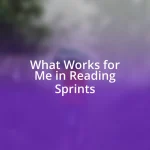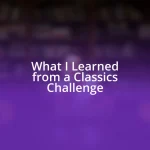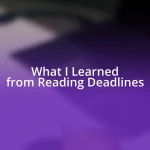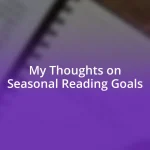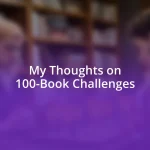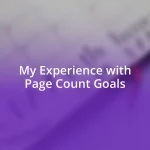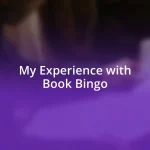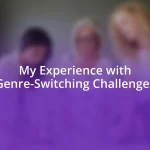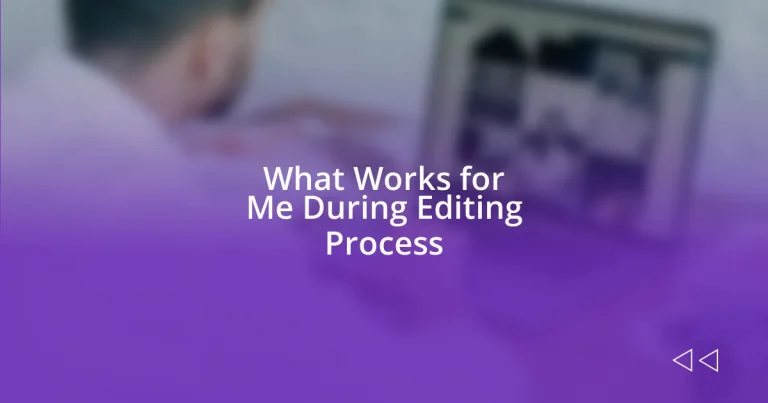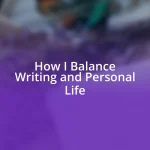Key takeaways:
- Editing is a process of exploration that refines both voice and message, akin to sculpting; it reveals hidden insights about the writer and their style.
- Effective preparation for editing includes taking breaks, gathering resources, creating a distraction-free environment, setting specific goals, and reading aloud to enhance clarity.
- Incorporating techniques like reverse outlining, peer editing, and diverse reading can significantly improve editing skills and lead to more impactful writing.
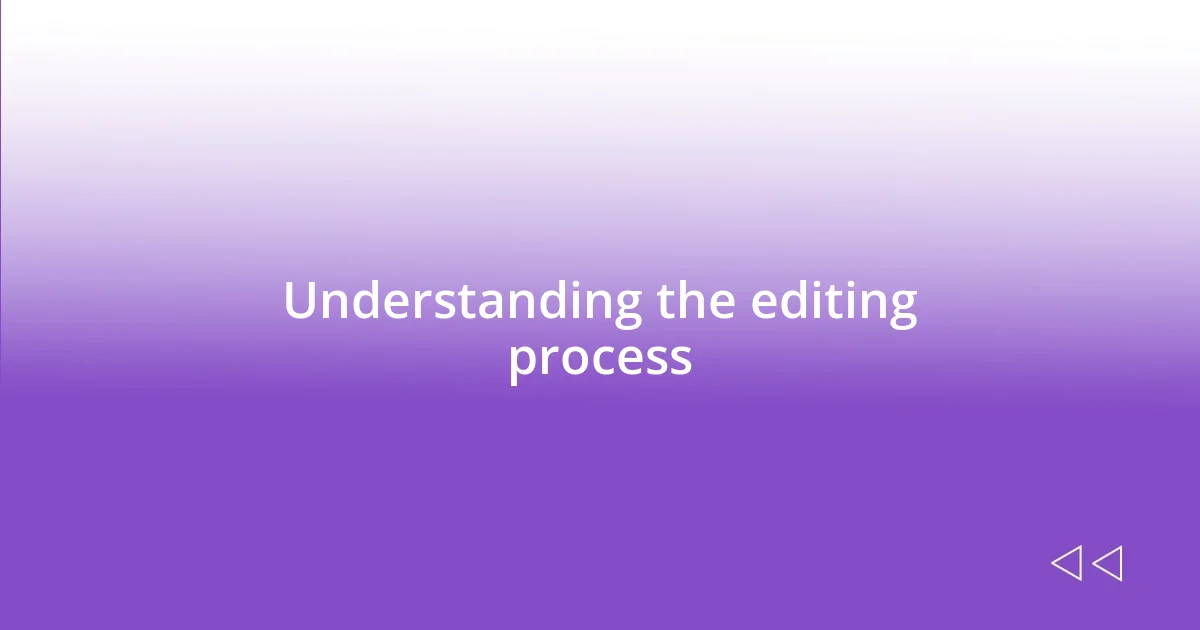
Understanding the editing process
Understanding the editing process is more than simply correcting grammar or fixing typos; it’s about refining your voice and honing your message. When I first started editing my work, I remember the overwhelming feeling of wanting to rip everything apart. Have you ever felt that way, staring at a draft and wondering how to make it shine?
As I delved deeper into editing, I realized it’s an act of exploration and discovery. Each revision led me to unexpected insights about my writing style and clarity. There was a moment when I looked back at a piece I thought was complete, only to uncover layers I hadn’t seen before. Isn’t it exciting to uncover hidden gems in your own work?
In my experience, the editing process often feels like sculpting a block of marble. You chip away at the unnecessary bits until the essence of your idea emerges. Every cut, every change, teaches me something new about not just the text, but myself as a writer. How often do we underestimate the power of revisiting our drafts with fresh eyes?
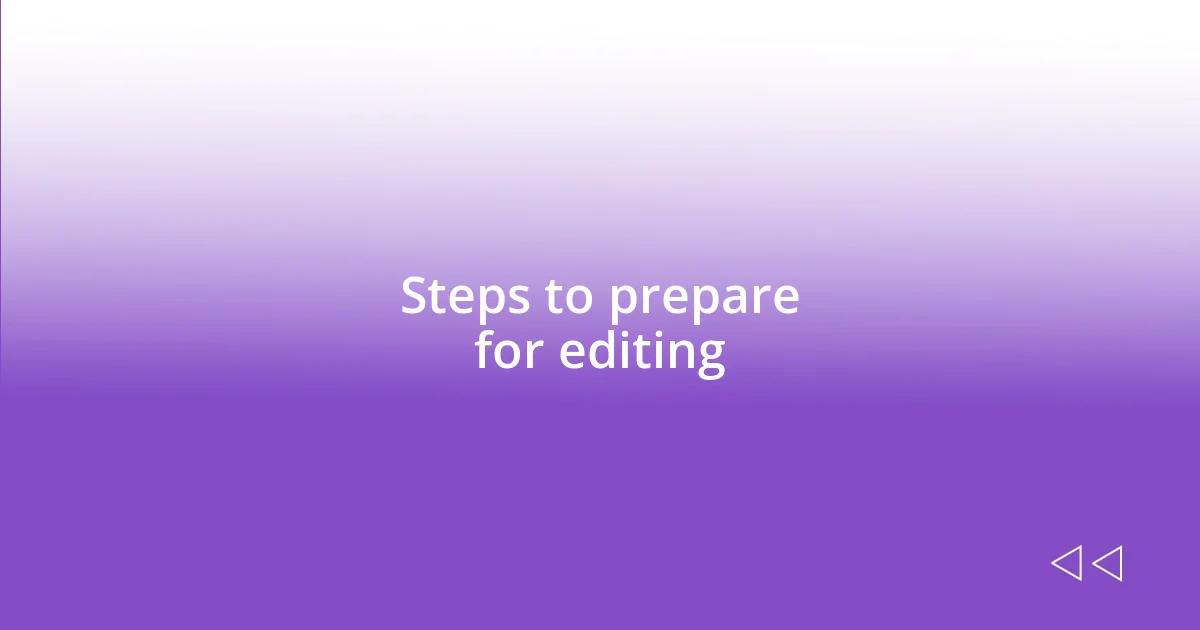
Steps to prepare for editing
Preparing for the editing stage is crucial. I like to embrace a mindset shift before diving in, recognizing that editing is a entirely different process from writing. It’s about stepping back and looking at the work through fresh eyes. One technique I find effective is stepping away from the piece for a short duration. This brief distance allows me to return with a clear perspective, almost like that first sip of cold water on a hot day.
Here’s a checklist I typically follow to set the stage for a productive editing session:
- Take a Break: Step away from your draft for at least a few hours or even days.
- Gather Resources: Have your preferred style guide and notes handy.
- Create a Comfortable Space: Ensure your editing area is free from distractions.
- Set Specific Goals: Decide on the areas you want to focus on—structure, clarity, or grammar.
- Read Aloud: This helps catch rhythm issues and awkward phrasing that might be missed when reading silently.
By following these steps, I’ve found that my editing sessions become more fruitful and focused. Each edit feels the result of live engagement with my text, not just mechanical corrections. It’s like having a dialogue with my words, making the process both rewarding and enlightening.
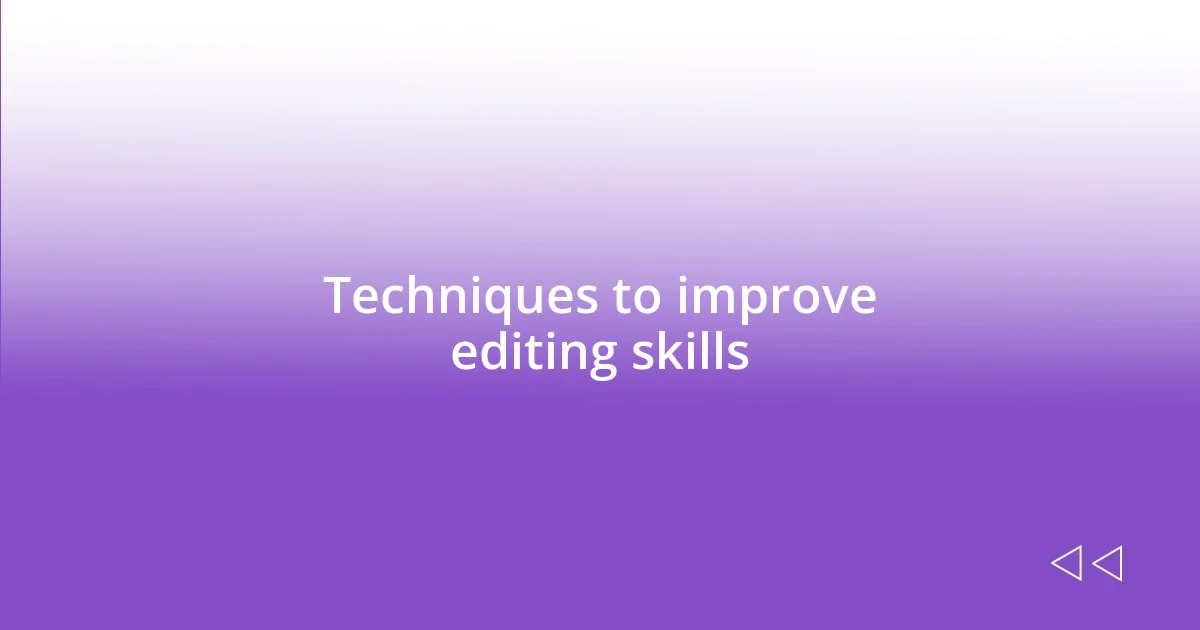
Techniques to improve editing skills
Improving editing skills is a journey filled with practical techniques that can lead to remarkable transformations in one’s writing. One of my favorite strategies is the “reverse outline.” After completing a draft, I create an outline based on the content I’ve written, which highlights the flow of ideas. This practice reveals any structural weaknesses or gaps in logic—I remember discovering a significant plot hole in a story by doing just this. Have you ever noticed how beneficial a shift in perspective can be?
Another technique I swear by is peer editing. Sharing my work with a trusted friend or fellow writer not only provides fresh eyes but also opens the door to constructive criticism. The first time I let someone read my draft, their feedback struck me like a lightning bolt; they pointed out areas where my argument fell flat. I had been too close to the material to see these flaws. Have you sought out another perspective on your work? It can be a game-changer!
Lastly, I embrace the art of reading different formats. Whether it’s articles, novels, or poetry, exposing myself to various styles helps me return to my writing with renewed inspiration. One time, after reading a thought-provoking essay, I infused my piece with emotional depth I hadn’t expected. What styles speak to you? Diversifying what we read can spark creativity and enhance our editing skills.
| Technique | Description |
|---|---|
| Reverse Outline | Create an outline post-writing to spot structural issues. |
| Peer Editing | Get feedback from others for fresh insights and constructive criticism. |
| Diverse Reading | Expose yourself to various writing styles for inspiration. |
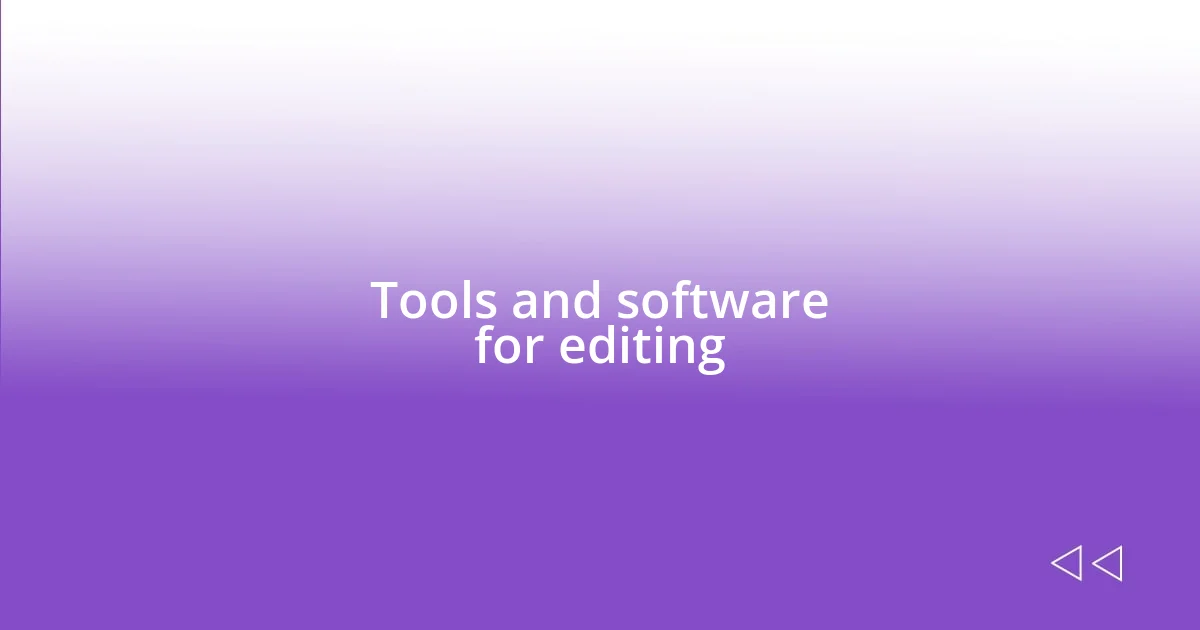
Tools and software for editing
Tools and software play an essential role in my editing process, and I’ve found that the right choices can make all the difference. For instance, I rely heavily on Grammarly for grammar and style checks. The first time I used it, I was astounded by how many subtle errors I had missed—those tiny bugs that can distort clarity. Have you ever had that feeling of relief when a software catches your mistakes before you hit “publish”?
Additionally, I enjoy using Scrivener, especially for larger projects. Its organizational capabilities allow me to manage chapters and sections seamlessly. I remember tackling a hefty novel, and Scrivener helped break down the daunting task into manageable pieces. It’s like having a personal assistant who organizes my thoughts and keeps me on track—priceless, don’t you think?
I also find that tools like Hemingway Editor help enhance readability. The first time I inputted a piece, I was shocked to see how many sentences were too complex or passive. It pushed me to reconsider my writing style dramatically. This tool is crucial because it reminds us that clear writing connects better with readers. After all, isn’t our ultimate goal to communicate effectively?
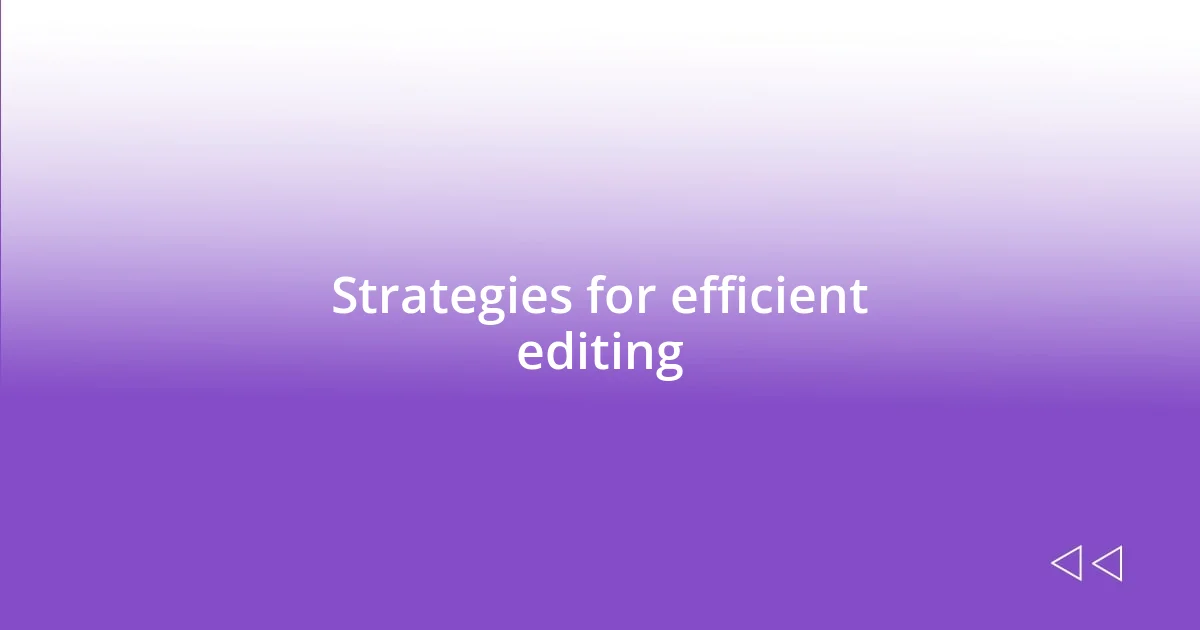
Strategies for efficient editing
One of the strategies I find incredibly effective is taking breaks during the editing process. I can’t stress enough how stepping away from my work can bring fresh clarity. When I return after a short break, I often spot issues I initially overlooked. It’s like taking a deep breath after holding it in for too long. Have you ever noticed how a little distance helps you see things anew?
Another technique that has worked wonders for me is reading my work aloud. This simple act transforms the experience entirely. The first time I did this, I was startled at how awkward some phrases sounded when spoken. Hearing my writing brought to life the rhythm and flow—and sometimes the lack of it! It’s a straightforward strategy that lays bare any awkwardness or unclear phrases. Have you tried this? It’s like holding a mirror up to your words.
Lastly, I utilize checklists to keep myself focused during the editing phase. I create a list of common mistakes I tend to make and systematically go through each item. The sense of accomplishment I feel when checking off completed items gives me a clear vision of what still needs attention. It’s not just about catching errors; it’s also about building good habits. Do you have a strategy that helps you stay on track during editing?
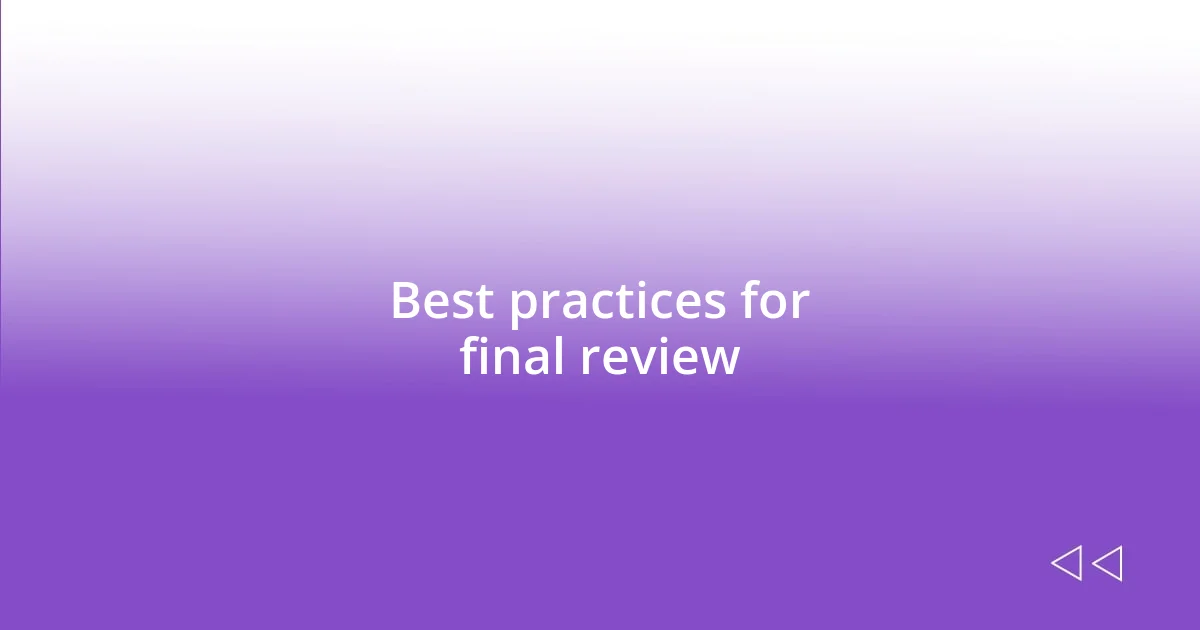
Best practices for final review
One best practice I prioritize during my final review is to ensure a change of environment. I’ve found that moving to a different room or even a café can breathe new life into my editing process. The changing scenery seems to reset my mindset. Have you ever noticed how a new atmosphere can spark creativity? It often works wonders for my concentration and helps me catch mistakes that I might have overlooked while I was too comfortable in my usual space.
Another tactic that enhances my final review is the power of feedback. I typically ask a trusted friend or colleague to read my work before it goes live. Their fresh perspective often reveals blind spots I didn’t even consider. I recall a time when a friend’s feedback on a critical piece helped me reframe a whole section to make my argument stronger. It’s amazing how another set of eyes can elevate our work. Have you thought about who in your circle might provide valuable insights?
Finally, I make a point to review my work in multiple formats—both digitally and in print. I remember the first time I printed out an essay for review; I was shocked to find errors that were invisible on the screen. Something about the tactile experience and different viewpoints helps me evaluate the flow and structure more effectively. Have you ever had that experience where reading on paper reveals something vital? It’s a simple yet transformative practice that adds significant value to my editing process.
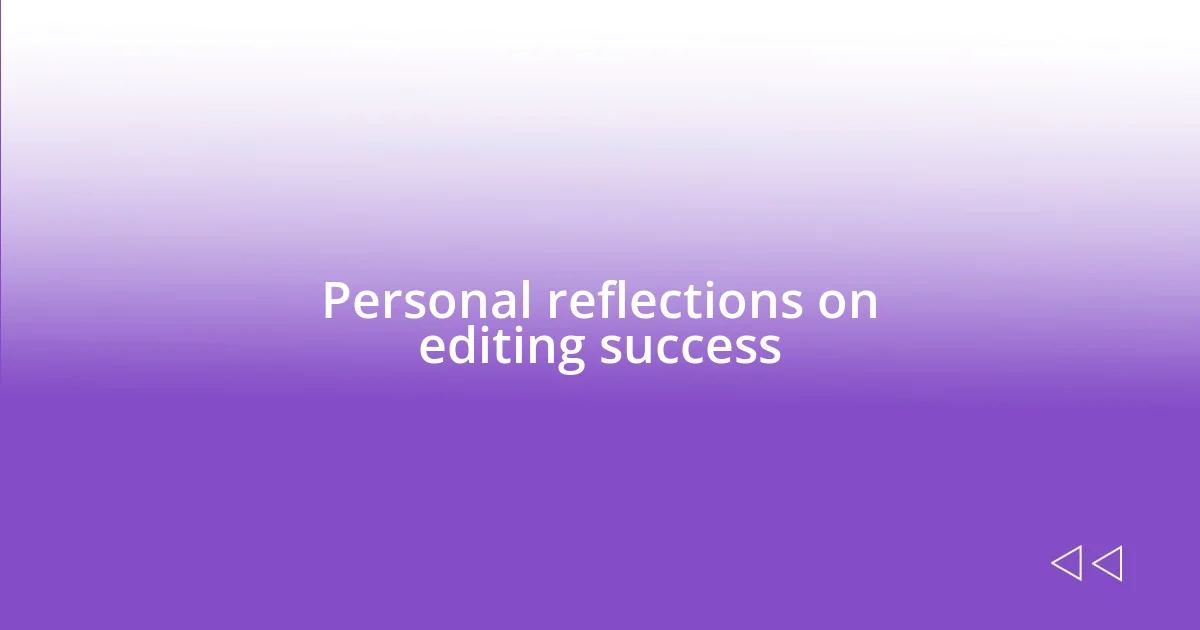
Personal reflections on editing success
Editing is a personal journey for me, and reflecting on my successes has taught me a lot about what truly works. I once spent weeks polishing a manuscript, but it wasn’t until I revisited it with fresh eyes after a short break that I noticed glaring inconsistencies. That moment of realization felt like a light bulb switching on—suddenly, the pieces fell into place. Have you ever experienced that rush of clarity after stepping back?
The emotional side of editing is something I’ve come to recognize as essential. There was a time when I shredded my own work, convinced it was subpar. But then I learned to embrace the process, accepting that edits are not failures but stepping stones towards improvement. It was liberating! Now, when I look back at something I once thought was perfect, I can laugh at how much I’ve grown since then. Have you found moments like this in your own writing journey?
Every successful edit seems to hinge on the details. I recall working on a project where I meticulously checked for grammar and punctuation, only to realize the heart of my message was lost in the chaos of technicalities. Since then, I’ve focused more on the narrative’s flow and emotional resonance, ensuring that I remain connected to my writing. It’s fascinating how the smallest tweak can change the entire tone of a piece. How do you balance technical accuracy with emotional impact in your edits?
